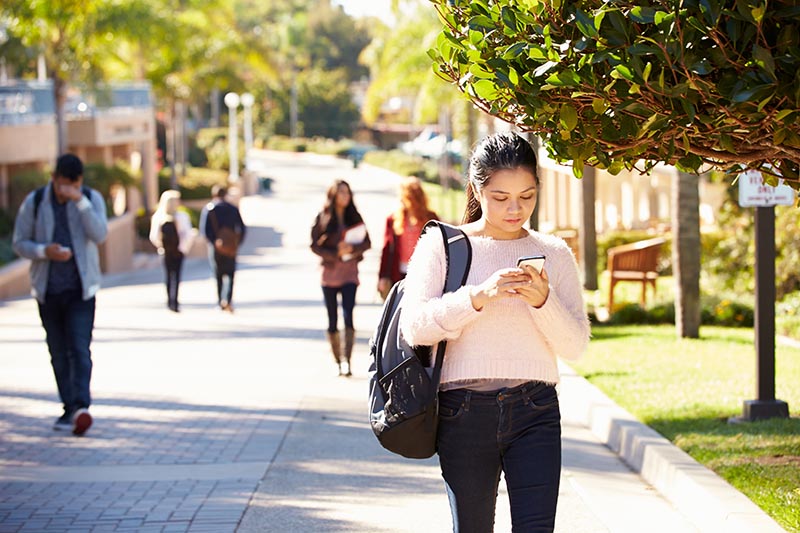Fans know where to find the University of Alabama football program—it’s usually at the top of the polls.
But now, the University of Alabama football program also knows where to find its fans. Or, at least, it’s trying.
The school is trying to boost attendance and to keep fans in their seats at Bryant-Denny Stadium by using location-tracking data. They are tracking which students come to the game and who is staying until the end of what are usually non-competitive contests in the fourth quarter. Students who use the location-tracking app and come to the game are awarded Loyalty Points, and then they are awarded more points if they stay all the way through the game.
Alabama’s approach may be unique, but they are certainly not alone in gathering information directly from students. Schools are looking for data wherever they can find it—and as the technology offers increasing opportunities to do so, colleges and universities are looking to apps that a student carries with them to provide that data. Let’s take a look.
Helping students succeed
Colleges use the plethora of data available to them in a number of ways – with two of the big end goals being for the school to run more efficiently and to help students find success. Some schools are using location-tracking data to try to meet that goal of success by making sure students are actually attending class.
The University of North Carolina is running a pilot program where students can download an app that, when they are within range of a sensor in the classroom, registers whether or not the student is in that classroom. University officials and athletic directors think the app is a good way to help make sure students—and student-athletes in particular—are taking that first step towards success through their presence in their assigned classes.
A way to prepare the whole student
Oral Roberts University in Oklahoma has always required students to participate in health and fitness activities as part of its Whole Person Education initiative. For years students tracked their activities on paper, but the school now tracks students’ activities through wearable technology.
Oral Roberts has both on-campus and online students wear devices that keep track of data like heart rate and sleep patterns. The data feeds into the school’s computer system where it is available to students and teachers alike, alongside other data such as grades. It is used in the same way as grades, as well. Just as a teacher can notice a negative trend in academic performance and intervene, a teacher or the student himself might take action if a student’s physical activity indicates a potential problem.
Privacy concerns
Other schools use the same app as the University of Alabama to reward students with items such as t-shirts if they gain loyalty points. Alabama, though, is the first to use the app as a location tracker. Naturally, devices being used in this way—and to track attendance, as at UNC – have raised privacy concerns. Some watchdogs are alarmed that a public university such as Alabama is tracking the location of students, seeing it as a stepping stone to government agencies doing the same.
For now, though, the tracking at Alabama is optional. And many students using the app seem to be comfortable with the trade-off: loyalty points in exchange for the school knowing where they are for a few hours on Saturday…and only if they’re in the stadium. The students who are not comfortable with sharing their information have taken the step available to them: they don’t download the app.
Related articles
- The Role of Data Quality in Higher Education Analytics
- 3 Ways Analytics Can Make Higher Ed More Efficient
- The University Campus of the Future: What’s Coming in the Next 10 Years
- 3 Important Characteristics of a Cannabis Analytics Solution - May 1, 2024
- Analyzing the Challenges of Pharmaceutical Supply Shortages - April 26, 2024
- Summer is an Opportunity for Digital Transformation in Education - April 17, 2024






